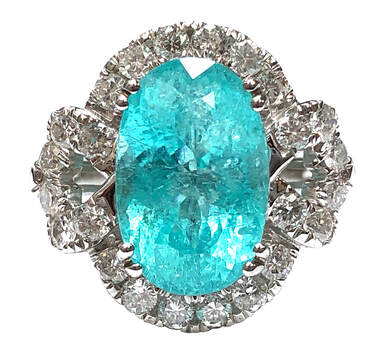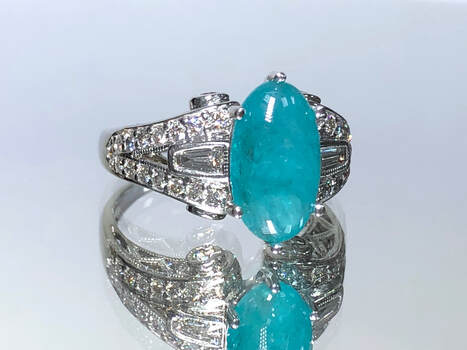PARAíBA TOURMALINE
|
Species: Tourmaline
Mohs Hardness: 7 to 7.5 out of 10 Color: Intense, vivid neon blue to green (color caused by copper impurities) RI: 1.603 to 1.655 (+/-0.005) Birefringence: 0.013 to 0.024 SR/DR/AGG: DR Clarity Type: Type II Optic Character: Uniaxial negative Pleochroism: Medium to strong, usually two tones of the gem's body color. Spectrum: Not diagnostic Fluorescence: Not diagnostic. Inert or weak to moderate bluish white under LW. SG: 2.84 to 3.10 (3.05 Average) Routine Treatments: Heating Additional Treatments: Clarity Enhancement (Fracture Filling) |





